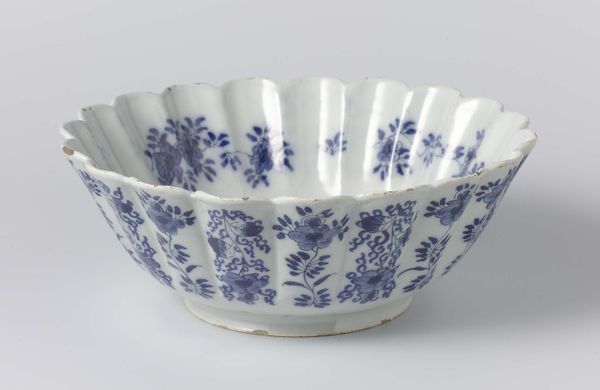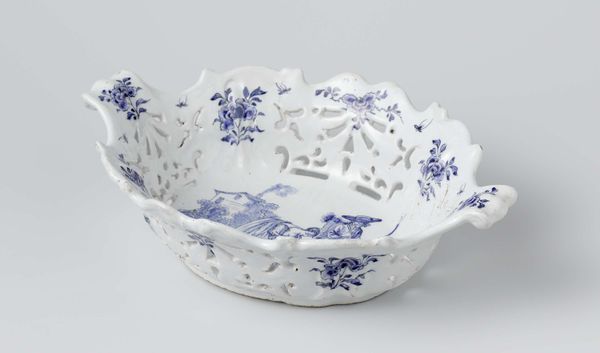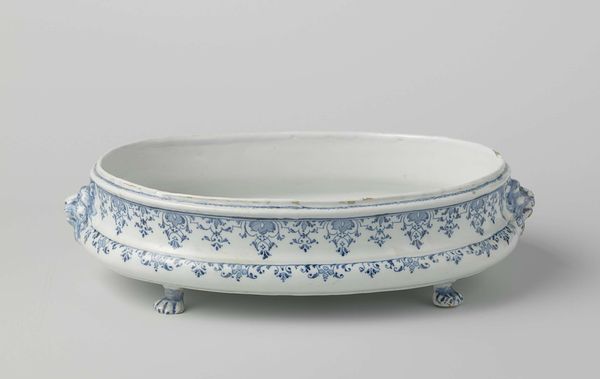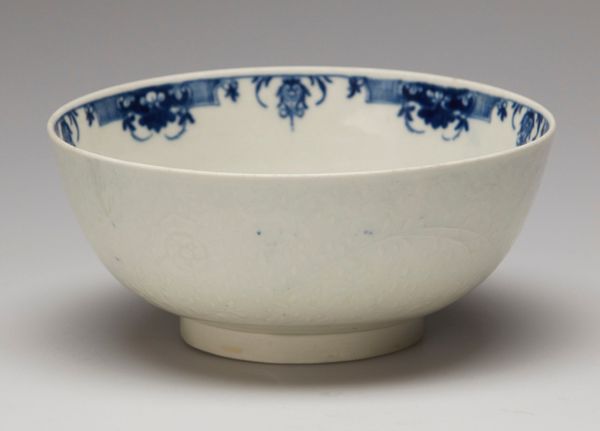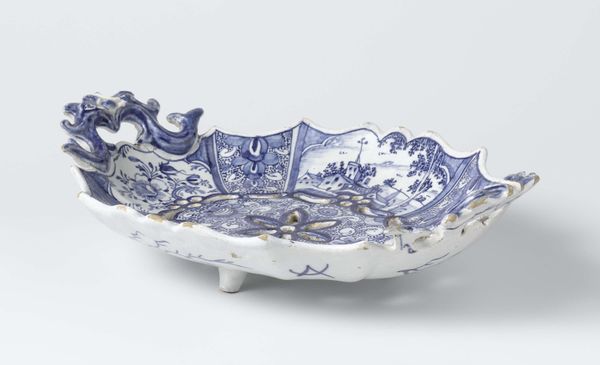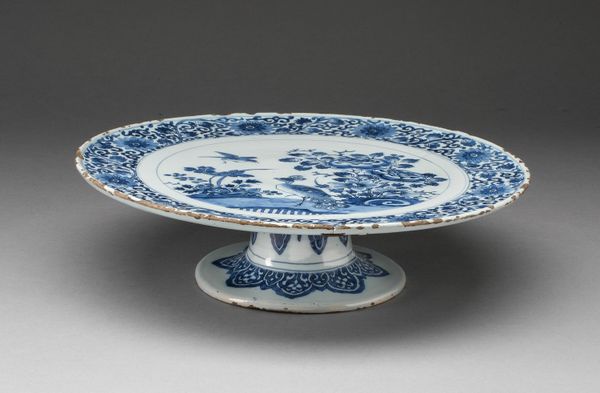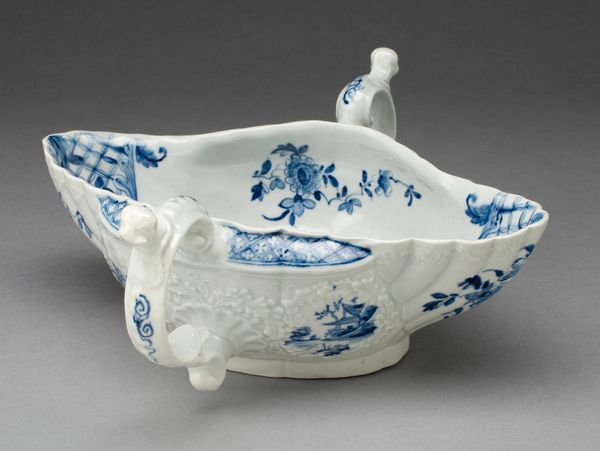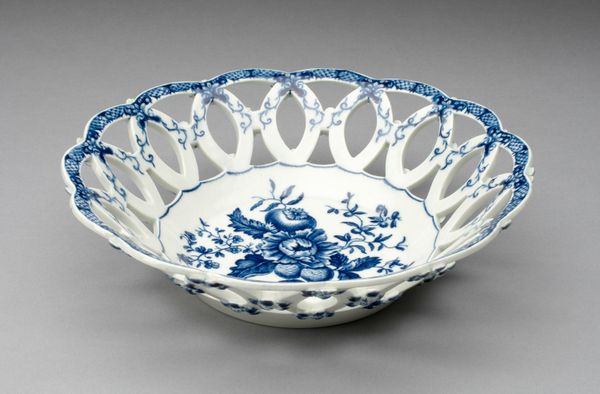
Slakom, beschilderd in blauw met twee spelende kinderen bij een ruïne. 1760 - 1770
0:00
0:00
johanvankerkhoff
Rijksmuseum
ceramic, earthenware
#
dutch-golden-age
#
ceramic
#
earthenware
#
stoneware
#
ceramic
#
decorative-art
#
rococo
Dimensions: height 6.3 cm, width 33.6 cm, depth 27.8 cm
Copyright: Rijks Museum: Open Domain
Editor: So, this lovely piece is called "Slakom, beschilderd in blauw met twee spelende kinderen bij een ruïne," a ceramic earthenware piece from 1760-1770 by Johan van Kerkhoff, housed in the Rijksmuseum. It's quite charming, with those delicate blue decorations. But I'm wondering...what's the story this object seems to suggest? Curator: It’s funny, isn’t it? Such a mundane object, elevated by art. I see a dance between order and decay. You have this meticulously crafted ceramic, meant for perhaps holding… snails. But then, someone paints these children frolicking amongst ruins. What are they playing at, I wonder? Are they imagining themselves as kings and queens in their crumbling castle? It makes you wonder if those delicate floral patterns are trying too hard to hold back chaos, no? Editor: I hadn’t thought of it like that! It almost feels like there's a commentary on fleeting moments and lasting structures. Like, even play can be situated around a history much older than itself. Does the ruin then symbolize the passing of time, maybe even empires, next to the everyday activity of the children? Curator: Exactly! It makes you think about our own little dramas playing out against the backdrop of… well, everything. What survives, what crumbles, and what gets cheerfully painted on a snail dish. Editor: So true! I'll never look at a blue ceramic dish the same way again. Thank you! Curator: My pleasure! It's always about finding the whispers in the details, isn’t it? Keeps life interesting.
Comments
No comments
Be the first to comment and join the conversation on the ultimate creative platform.
